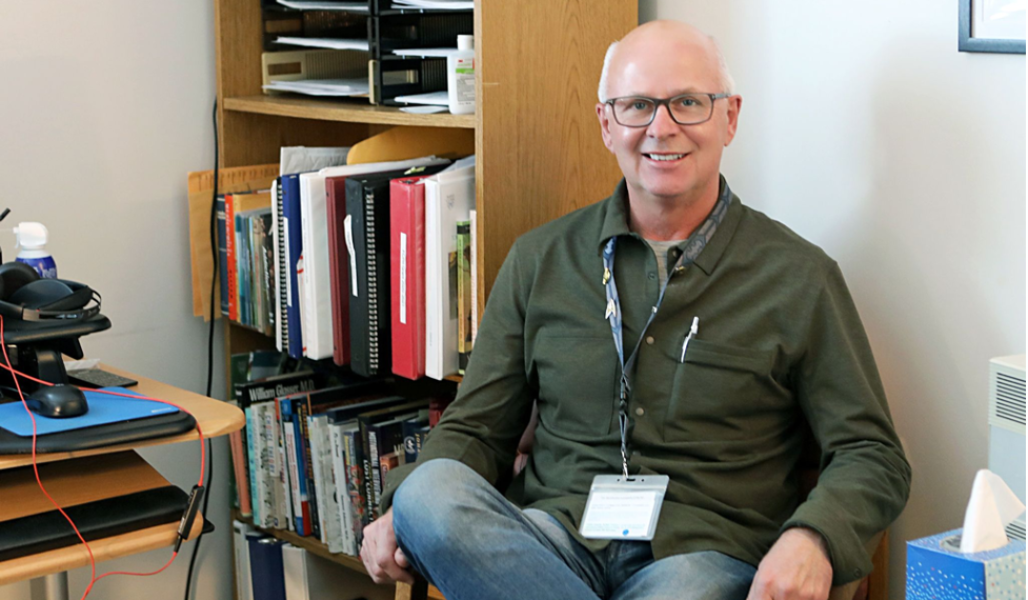
Southeast Human Service Center Finds Creative Ways to Continue NRT During Pandemic
One common theme that has come up during the COVID-19 era is how to continue to care for patients with non-COVID healthcare needs in the midst of a pandemic. That’s a question that the Southeast Human Service Center in Fargo, North Dakota, faced when it came to its nicotine replacement therapy (NRT) program.
“Prior to the pandemic, we worked with residential treatment centers in cooperation with the Dakota Foundation to care for patients dependent on nicotine, and it was 100% in person,” said Alanna Zeller, assistant regional director of the Southeast Human Service Center. Once everything shut down in spring 2020, the Southeast Human Service Center had to find a virtual way to continue treatment.
“We distributed telehealth devices, either phones or desktops, to clients and those in residential treatment centers so we could communicate with them,” Zeller said. “And, for the first time, we started shipping nicotine patches and gum through the mail.”
Southeast Human Service Center participated in a survey project conducted by the Great Plains Telehealth Resource Assistance Center (gpTRAC) and the Primary Care Office in North Dakota.
Phone Calls and Virtual Group Sessions
Ed Larson, tobacco treatment coordinator for the Southeast Human Service Center, started by simply calling his clients from home for one-on-one consults. Although these were generally weekly sessions, he was also available as needed by phone.
“We also conducted group sessions through our residential treatment facilities,” Larson explained. “I would leave a supply of NRTs at the facilities along with instructions to the staff about its distribution to residents. They were welcomed to call me with dosing questions.”

Photo description: Ed Larson, tobacco treatment coordinator for the Southeast Human Service Center
COVID-19 Boosts Interest in NRT
Since respiratory issues increased the likelihood of contracting the coronavirus as well as the chances of more serious health consequences, the Southeast Human Service Center actually saw an increase in interest in its NRT program during the pandemic.
“I have one female client in her early 60s with respiratory problems,” Larson said. “She had not tried quitting smoking before, but her doctor started talking with her about her risk of dying should she contract COVID. The pandemic motivated her to try to quit. She’s gone from smoking one pack a day to none at all, and she’s moved from the highest NRT patch of 21 mg to only 7 mg since August 2020. She’s feeling and sleeping much better now.”
An Increase in Tobacco Specialists
During this time, the Southeast Human Service Center also saw an increase in the number of healthcare staff interested in becoming tobacco specialists as an added skill.
“Before COVID, interested professionals had to travel to Rochester, Minnesota, for the in-person training,” Larson said. “Now, the three-day intensive training was available online and people had some more time on their hands. As a result, we were able to expand our program from 12 to 13 tobacco specialists to 19.
“It’s been our goal to get a tobacco specialist on each of our 10 behavorial treatment teams,” he continued. “We’ve been able to do that plus have added one to our psychiatry services and one who specifically works with youth.”

Photo description: Ed Larson conducting a virtual visit
NRT Component of Community Health Response
The Southeast Human Service Center also participated in a community effort to care for the homeless population in the state.
“The city, county and state agencies worked with local hotels to house homeless individuals who had tested positive for COVID,” Zeller explained. “It was a huge logistical challenge to manage food, clothing, laundry and entertainment. Although the city provided on-site nursing services, we provided smartphones, NRT services, and crisis assessment to this population at the same time.”
Shrinking Demand for NRT
Interestingly enough, the Southeast Human Service Center has seen a decrease in demand for NRT supplies at the residential treatment facilities over the last year. “We are probably using less than half the NRTs than we were a year ago,” Larson said. “There’s been a shift in culture during this time. Very few people are smoking in the residential treatment facilities now.
“I think residents had an opportunity to know what life was like without nicotine,” Larson reflected. “As more people got into recovery during the lockdowns, I think there was a positive peer pressure to stop smoking.
Zeller attributes part of the program’s success to the fact that Southeast Human Service Center tries hard to create an individualized program. “We don’t just provide one session and a package of gum or patches,” she said. “We stick with them to see what works best. There’s evidence that after individuals quit nicotine, they will have more success quitting other substances as well.”
